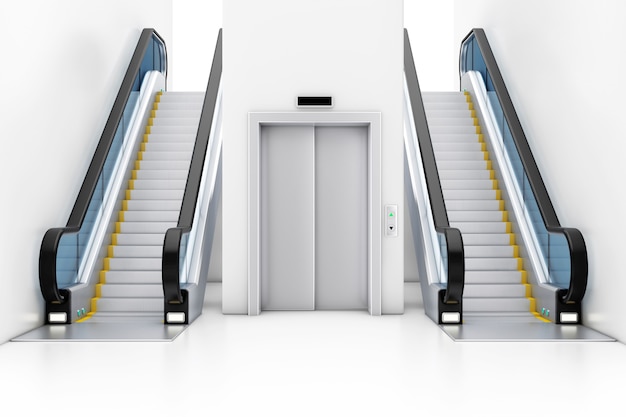Exploring the World of Lifts: Typical Problems Faced by Various Lift Devices
As we browse through the vertical transportation systems of modern buildings, elevators stand out as an essential component of our everyday lives. From hydraulic lifts to traction systems and machine-room-less styles, each lift type comes with its collection of common problems.
Hydraulic Lifts
Hydraulic elevators, frequently chosen for low-rise structures, use fluid stress to manage the movement of the elevator car (lift repair companies). This system includes a hydraulic pump pressing oil into a cyndrical tube, causing the lift to relocate in the desired direction. While hydraulic elevators are recognized for their smooth and peaceful operation, they do feature their very own set of typical problems
One common issue with hydraulic elevators is oil leakage. In addition, issues with the control system, such as defective shutoffs or a malfunctioning pump, can create disturbances in the elevator's activity.
Regular upkeep and timely repair work are vital to ensure the smooth performance of hydraulic elevators. By addressing these usual issues proactively, building proprietors can decrease downtime and ensure the security and efficiency of their upright transportation system.
Grip Lifts
When taking into consideration upright transport systems in buildings, an additional usual type besides hydraulic lifts is the traction elevator. Grip lifts run utilizing a system of ropes and weights that relocate the elevator vehicle by gripping onto the hoist ropes. This mechanism enables for smoother and much faster upright transportation compared to hydraulic systems.
One of the usual concerns dealt with by grip lifts is rope wear. The constant movement of the ropes within the traction system can result in use and tear over time, potentially causing the elevator to breakdown or come to be hazardous for usage. Routine examinations and maintenance of the ropes are important to make certain the elevator's proper functioning and security.
One more issue that traction elevators may experience is associated to the control system. Issues with the control system can result in concerns such as irregular motion, delays in action times, or also full shutdowns. Normal testing and maintenance of the control system are vital to stop such problems and make sure the lift's reliability.
Machine-Room-Less (MRL) Elevators

One of the key components of MRL lifts is the small gearless traction device that is installed within the hoistway. This equipment click efficiently drives the lift vehicle without the need for large equipment found in traditional traction elevators. Additionally, MRL lifts normally utilize a counterweight system to stabilize the car, additional boosting their power efficiency.
Despite their advantages, MRL lifts may deal with challenges associated with upkeep and fixing because of the restricted area for devices setup. Availability for servicing parts within the shaft can be restricted, requiring specialized training for technicians. Appropriate maintenance routines and regular assessments are important to ensure the over at this website ongoing smooth operation of MRL elevators.
Overloading and Weight Limit Issues
Overloading and weight restriction concerns are critical concerns in lift procedures. Lift makers design raises with details weight abilities to make certain guest safety and equipment durability.
When elevators are overloaded, it puts excessive stress on the electric motor, wires, and various other elements, potentially triggering breakdowns or malfunctions. Safety and security mechanisms such as sensing units and overload sensing units are in area to stop elevators from moving if they spot excess weight. Additionally, going beyond weight limitations can result in boosted energy intake and deterioration on the lift system.
To reduce overloading concerns, building supervisors should plainly present weight limitations in elevators and enlighten residents on the value of adhering to these restrictions - lift repair companies. Regular upkeep checks by certified service technicians can additionally help make certain that elevators are operating Clicking Here within secure weight specifications. By attending to overloading and weight limit concerns proactively, building owners can boost lift security and effectiveness
Electrical System Failures
Surpassing weight restrictions in elevators can not only lead to mechanical issues but additionally potentially contribute to electric system failings within the lift infrastructure. Electric system failings are a critical problem in lift operation, as they can cause unanticipated shutdowns, breakdowns, or also security dangers.
Routine maintenance and evaluations are crucial to identify and attend to potential electrical issues immediately, guaranteeing the risk-free and reliable operation of elevator systems. By adhering to weight limits and conducting regular electric system checks, structure proprietors can mitigate the danger of electrical failings in elevators.
Verdict

Hydraulic elevators, frequently favored for low-rise structures, utilize fluid pressure to control the movement of the lift cars and truck.When thinking about upright transport systems in structures, one more typical kind aside from hydraulic lifts is the traction elevator. Traction lifts operate utilizing a system of ropes and weights that relocate the lift car by clutching onto the hoist ropes. Unlike traditional lifts that need a different maker space to house the tools, MRL elevators integrate many of the parts within the shaft, removing the demand for a dedicated device space.In verdict, elevators deal with usual issues such as hydraulic malfunctions, traction system failings, and electric system problems.